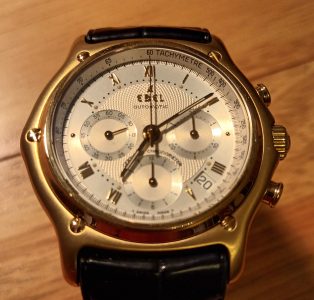At the outset I wish to set some parameters! Ebel is an interesting brand with a great history and, in their heyday – I suppose the 1980’s-1990’s, they had several popular watch ranges with numerous models in a variety of metals – stainless steel, bi-metal and all-gold. Gents and ladies were catered for, with the latter sometimes displaying high jewellery finishing. However, one cannot cover all things in one article, so I will content myself with just detailing some brand history and then concentrating on mainly the Sport Classique/1911 chronograph range. All that said, there is still much to cover, but hopefully it will not be too tedious!
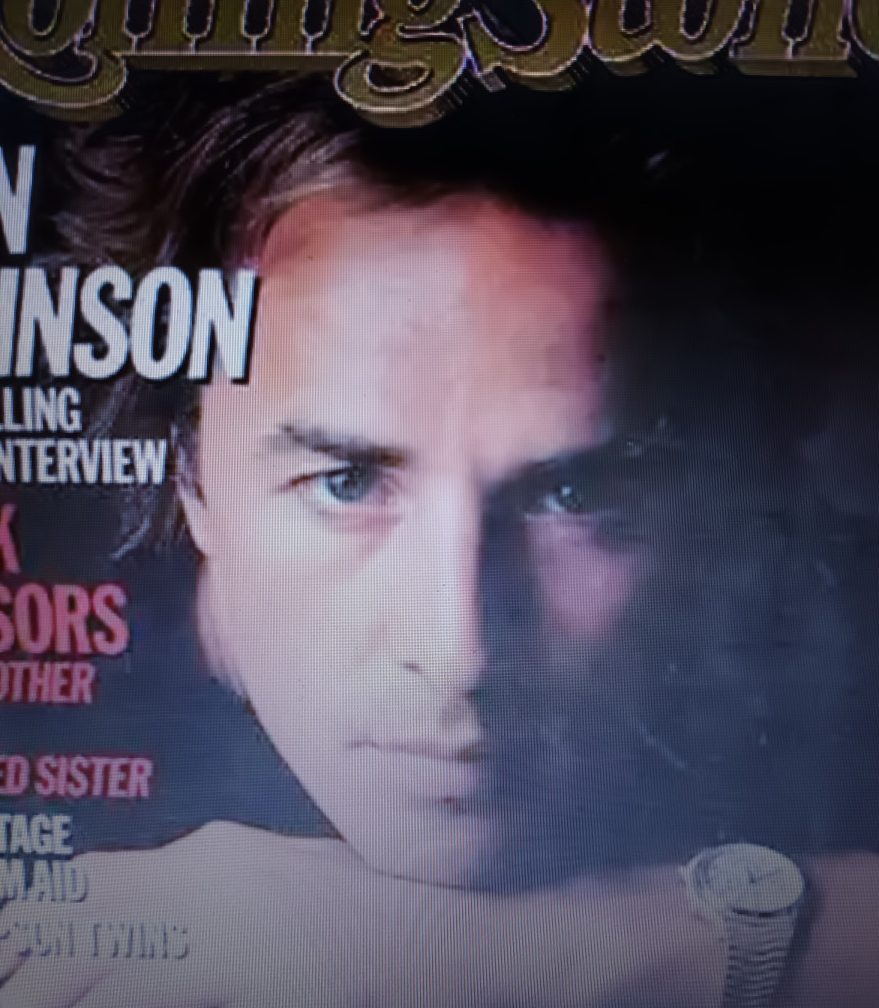
Firstly, let me go back in time – to the early 80’s in fact. There was much less on TV than today, but one thing I do recall watching quite avidly was Miami Vice. This featured Don Johnson and Philip Michael Thomas (as Crocket and Tubbs), who played two flashy undercover cops. To be fair though, I never really noticed any horological aspects. Frankly, I had little interest or knowledge of such things at the time. The cars may have piqued my interest a bit more, but I still may not have even known the model details. As to the clothing, well, even in those days it was pretty naff, but hey, the show was glamorous, exciting and had good music! All this notwithstanding, it was an article many many years later – in GQ I think, that highlighted Ebel’s involvement in the series. This now grabbed my attention so I re-explored the details. In a nutshell, I thought the watch Don Johnson wore was drop-dead gorgeous, with its gold hexagon-shaped case and exposed screws, white dial, and that ever so sexy “Wave” (curved) link bracelet. Additionally, the slogan “Architect of Time” was very clever and inspirational. Although I did a little research at the time, I made no active move to acquire one – more fool me! However, later on last year my interest was re-ignited and I began to research a little more seriously.
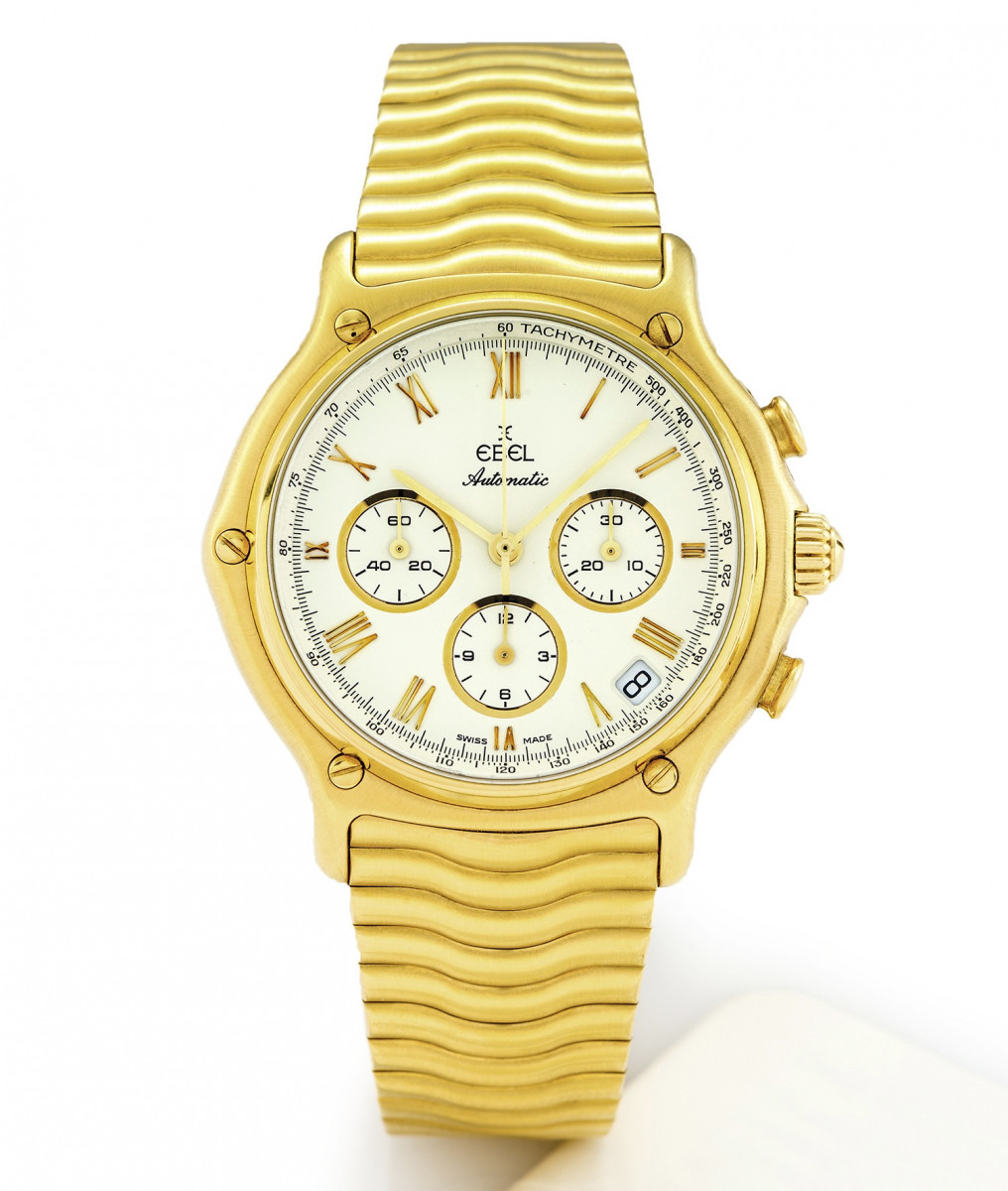
It was during one of my casual internet probing’s that an all-gold version popped up in the UK. It had been serviced and came with all accompaniments. Like most available today, it was a slightly later version as evidenced by the straight bracelet links. This offering had a black dial – which does, if I’m honest, show off the gold a little better than the white one. An additional draw was that this model contained Zenith’s famous El Primero caliber. The main grab though was the price – being some £5.8k. This was rather cheaper than those currently being advertised, which were in the £8-£12k range. As they say, if it appears too good to be true, then it probably is! Anyway, I contacted the retailer and asked a variety of questions. One I always raise if a watch is on a bracelet is the size, as many will have had some links removed and then lost. Good job I did, as the vendor was honest enough to admit that it would only fit a small wrist. By the look of images of it, at least 4-5 links had vanished. I had to leave matters, but the following week did toy with putting in an offer, reasoning that I may be able to obtain some extra gold links later on. In fact, I did see some online for around £300 each, which, on a cost-effective basis could have worked out satisfactorily. However, they were sited abroad (Romania), which put me off a bit. Anyway, it was all a bit academic as when I next looked it was sold. Maybe someone else had a similar idea, or they just had infant sized wrists! By then I had also come to the conclusion that the early “Wave” version was just so rare that, well, there were essentially none out there. As such I would have to lower my expectations.
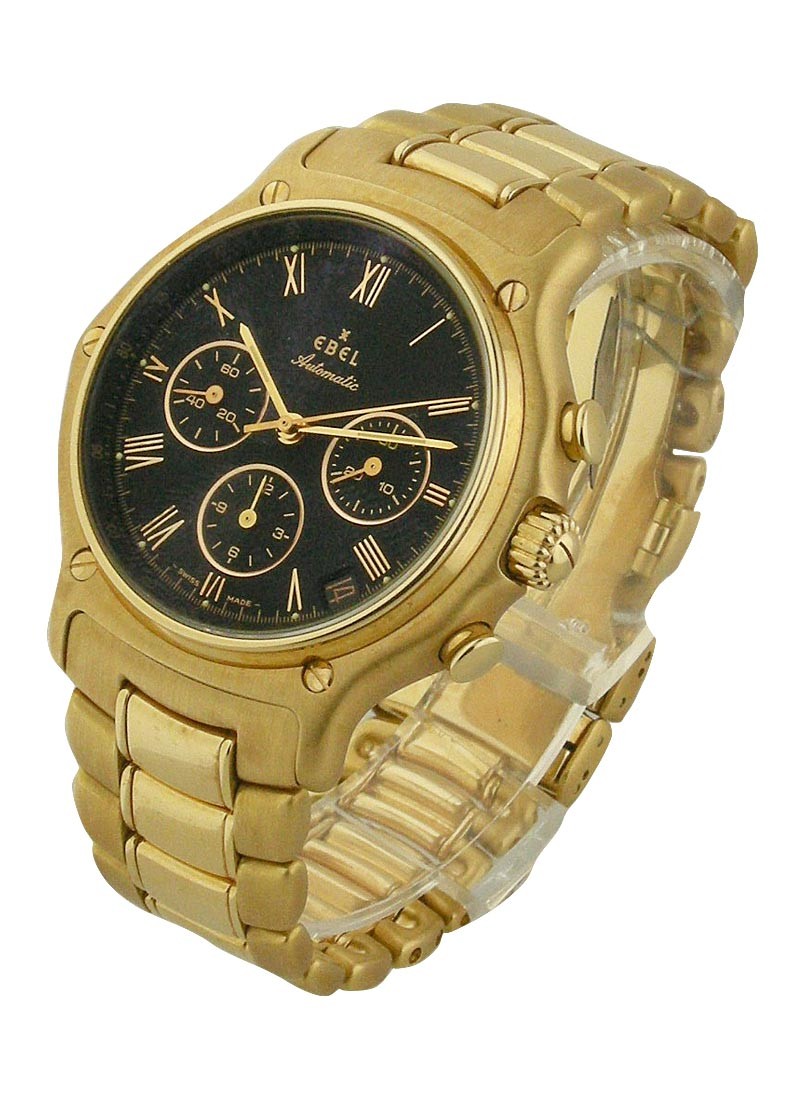
After my initial foray, I decided to call my mate James Kibble (Kibble Watches) to see if he had any sources for my dream watch. Now, I state here and now that I am not a believer of telepathy or other kinds of weird hokum. However, recently I have had a few odd incidents of deja vu if you will – thinking about something, then a bit later some kind of synergy or coincidence occurs! Well, in this instance I had barely finished explaining my desire when James cut in and said he had one – but it was not being advertised yet as he was awaiting a new strap from Ebel. After discussion, it was clear that this was not quite what I had in mind, but would not be unreceptive to knowing more. James said it was from 2002 (so not an EL Primero model), in yellow gold with a silver dial, and still on the original deployant with black crocodile strap. Also, it had full accompaniments. James offered to send me some images and, well, I was quite taken. I felt the price – at £5k, whilst not particularly unfair, was a little toppy for a strap and non-EP version. So after some jockeying we agreed on a little less. In addition, this would include a new strap that James had ordered via an Ebel retailer. Finally, as I wanted the watch to be perfect, we agreed to have it professionally polished by a firm James uses and highly rates. This would be some £200 (trade price. Ed).
So, I bought the watch and then eagerly awaited receipt. A few weeks later James forwarded to me and, well, I was not disappointed. It was a real cracker – particularly after the polish which had been carried out correctly, i.e. a full case disassembly etc.
However, a few days later James called with some bad news. The new black crocodile strap he had ordered (and paid for) was suddenly no longer available. Ebel were simply not making them any more. Alternative straps in somewhat gaudy colours were offered, in an odd “shark” effect, so most were inappropriate for my model (they were made for later models. Ed). In fact there was only one that (to my mind) did not look too crazy and that was in a lightish brown, so this was ordered. The existing black strap was actually in fair condition for its age, but for aesthetic and hygiene reasons I wanted a new one, and moreover, one that looked like the original. This however was not going to be a simple matter – but more on that later on.
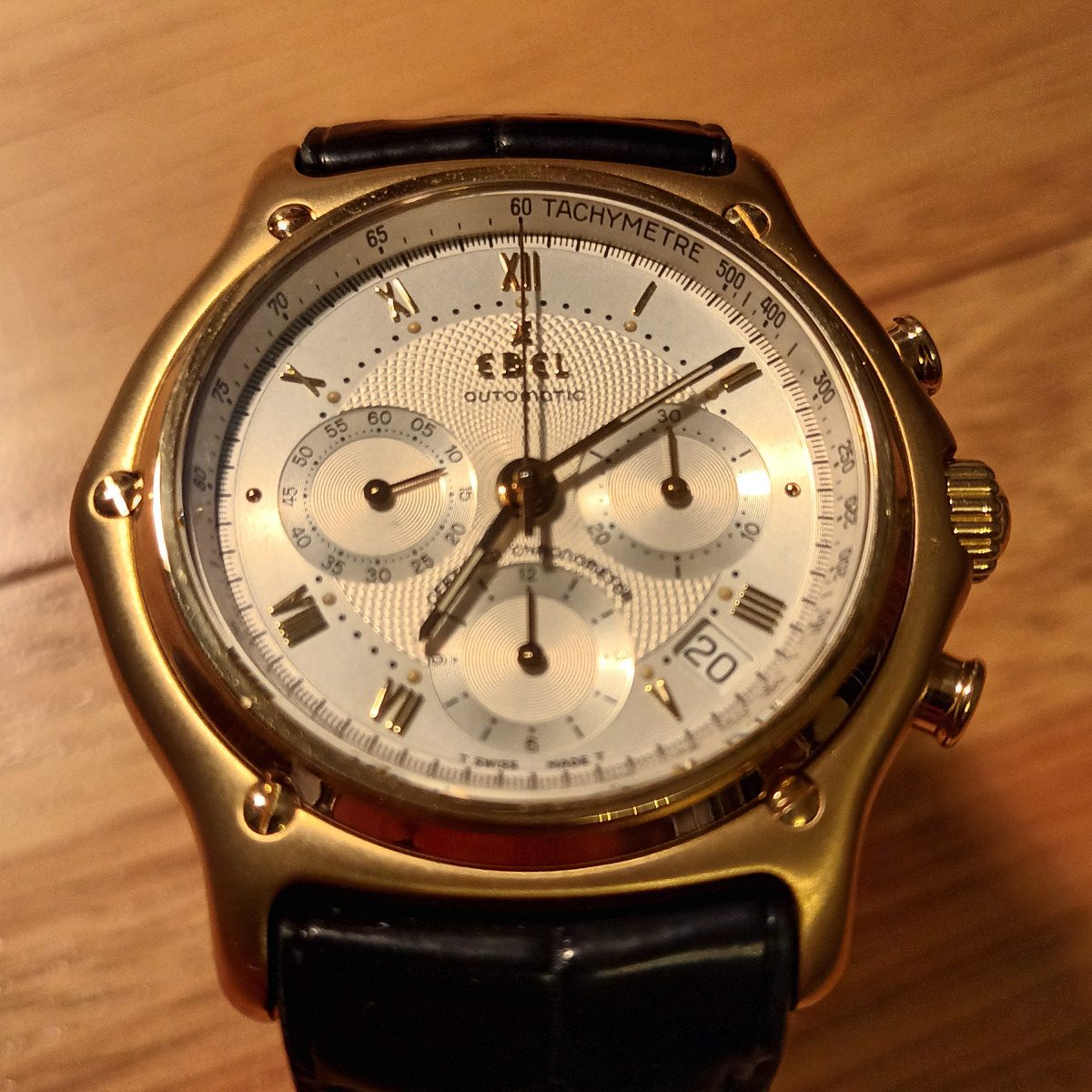
So, as usual, let us have a quick look at the brand, then study the watch in detail.
Ebel was started in 1910 by the husband and wife team of Eugene Blum and (et) Alice Levy, so the name Ebel is an acronym of their initials. The first wrist watches appeared in 1912, and were soon winning awards – both for mechanical quality and aesthetical beauty. One unusual feature of the firm (for the day) was that they offered a good range of both men’s and ladies’ watches – the latter sometimes using high-end jewels i.e. haute joaillerie. During the economic downturn in the late twenties, their son Charles Blum made an astute move by supplying other brands with economical but decent movements. This ensured that the firm survived the turmoil of the Wall Street Crash.
Business steadily grew, and during WW2 they supplied thousands of watches to British forces et al. In the 50’s they were one of the first brands to check the quality of their watch movements by using an electronic beat measuring device. This played a part in setting up CTM (Controle Techniqies De Montres) whose aim was to maintain Swiss custom controls to ensure high quality (this initiative contributed to the ultimate aims of what we now know as COSC). Now into the 1960’s, Charles (who was now running the firm), had health issues, so it was decided that son Pierre-Alan would return from his role in the US to head up the company. This was in 1969.
Surviving the quartz crisis of the mid 70’s – by essentially making their own electronic movement and making watches for themselves and Cartier (from 1972), Ebel decided to launch a totally new range in 1977. This was the Edy Schoepfer designed Sport Classique (Classic) for both gents and ladies. This had an unusual hexagonal-type shaped monocoque case, with a polished bezel secured via 5 countersunk flathead screws. The bracelet too was very distinctive, having reticulated-like links in a “Wave” pattern. Offerings were confined to time or time/date only in various metals, and mainly using their quartz movements. Some though were mechanically powered, and used Ebel’s caliber 080 – a modified Lemania 8810. Over the years this model range became extremely popular, with tie-ups with golf and tennis tournaments and their stars (Becker and Edberg), motor racing (Prost and Lauda), pop (Madonna), modelling (Claudia Schiffer) and finally movies (Harrison Ford and Dennis Hopper). So, things looked very bright indeed!
In order to capitalise on the sporting nature of the range, Blum decided that Ebel really needed a chronograph version too. The problem was that Ebel did not have such a movement. So, in around 1980, he started to talk to Zenith in order to use their El Primero caliber 3019 PHC unit. However, as Zenith had stopped making this some 6 years before, the only option initially was to buy whatever new/old stock Zenith had. Luckily, that was a fair amount! Work commenced on the new model and in 1982 the Sport Classic Chronograph (ref 1134901) was launched. It featured the same basic case design and Wave bracelet as before, in order to continue a “family” line. The watch was 38mm, and in stainless steel was priced at a not-inconsiderable £1,995. Gold versions were also offered. The ex-Zenith caliber was now known as Ebel caliber 134. A little while later in 1984, Zenith commenced El Primero movement production again with an interim 40.0 caliber, in order to not only fulfill their own needs, but also mainly Ebel and Rolex (the latter to power their Daytona chronograph reference 16520), albeit with some revisions. A final caliber revision emerged in 1986 and this was the 400. Ebel appear to have retained the number 134 for all these El Primero iterations.
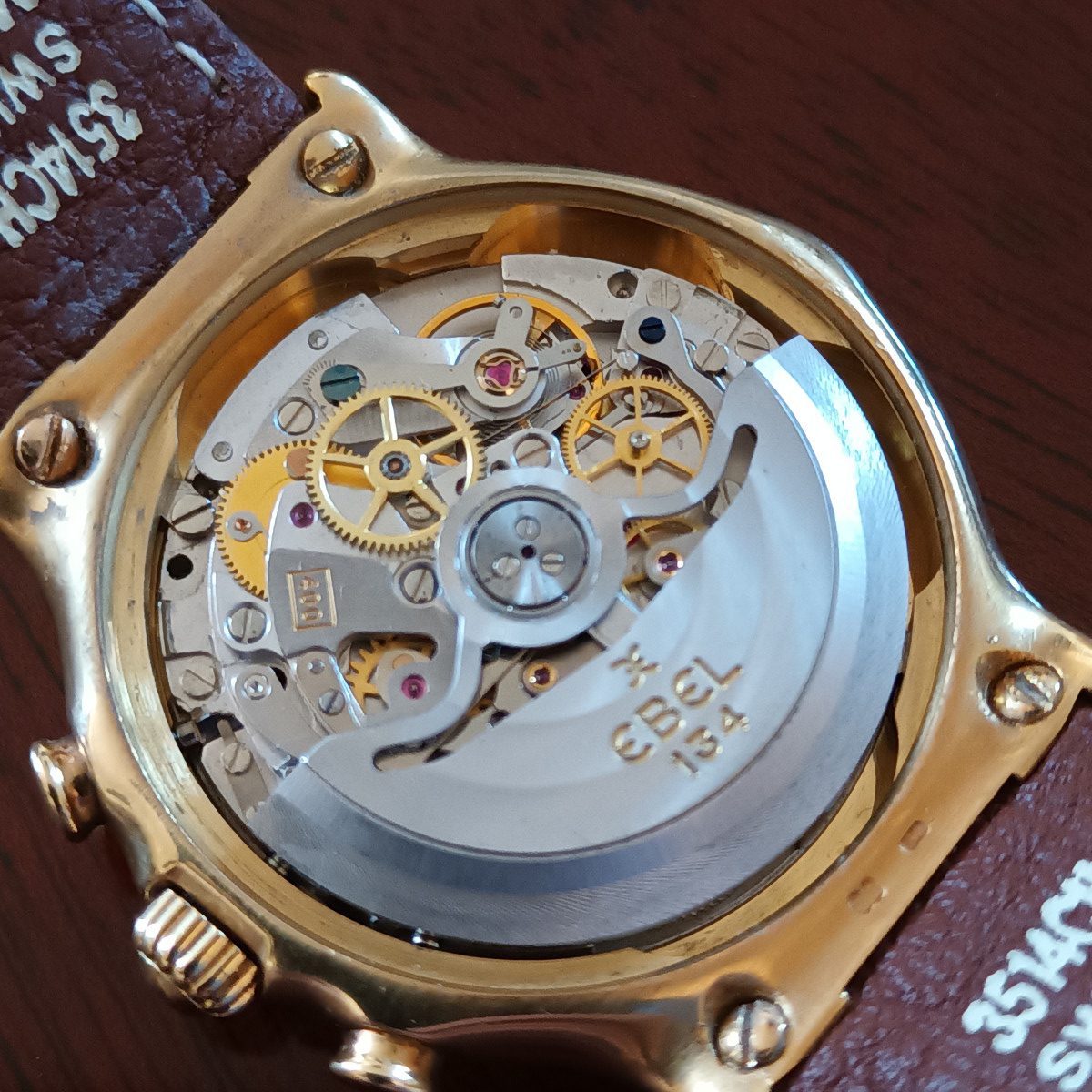
As noted previously, the advertising coup with Miami Vice in 1983 was huge, and by the third season in 1986, all the cast were sponsored by Ebel! Sales continued to do very well and in 1986 the Sport Classic range (chronograph and time/date models) were re-launched with the 1911 monika (the firm’s inception date) and to celebrate Ebel’s 75th birthday.
The company was continuing to thrive, now having five factories and some 500 employees. Even more stars were wearing Ebel watches. In some cases the 1911s were eclipsing even the Rolex Daytona both in terms of fame and indeed price. In fact the 1911 chronograph was almost twice as much as the Rolex Daytona! Although things looked great, Blum knew that as Zenith were producing their own El Primero powered watches, they would probably struggle to supply all the movements required, plus, he wanted more manufacturing control. As such, in 1990 Ebel began work on developing their own chronograph movement in conjunction with Nouveau Lemania. Using the latter’s caliber 1340 as a base, Ebel acquired the rights and reworked it quite heavily using many of the 322 parts in parallel to keep the modular design reasonably slim. So, in 1995/6 the Ebel caliber 137 took over from the El Primero and was installed into a 41mm cased chronograph, now called 1911 El Modulor. Further chronograph calibers followed – 139 and 245, along with the 240 (GMT) and finally 288 (Perpetual calendar).
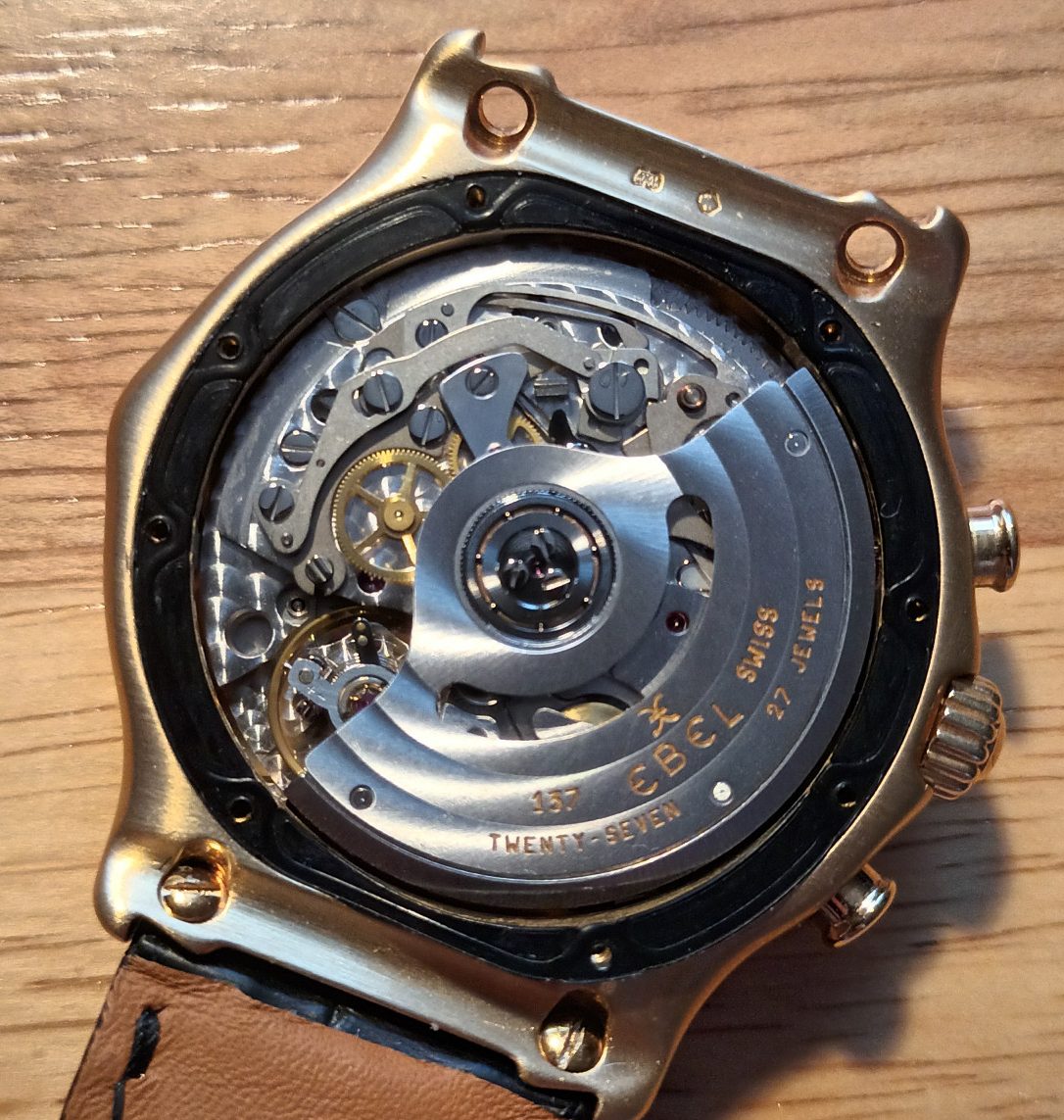
A short time later however, disaster struck. Pierre-Alain – who (allegedly) had diversified his wealth into a variety of ventures via holding company Sogespa, was now faced with enforced massive repayments during the major credit crisis that struck. So, in 1994 he had to sell his majority stake in Ebel to outside investors – the largest being Investcorp, a Bahraini investment company who, incidentally, also owned Breguet and Lemania. But they had little real experience of running a watch business and in the end fell out with Pierre-Alain and so they parted company a year or so later. The company then really did lose its way, and in 1999 Investcorp offloaded Ebel (and Chaumet) to LVMH (and the other two firms) to Swatch. Again, this was not a good fit as LVMH owned Zenith and Tag Heuer and did not want Ebel to compete against them, so, restricted their development. Pierre-Alain attempted to buy back his company in 2003, but this was rejected.
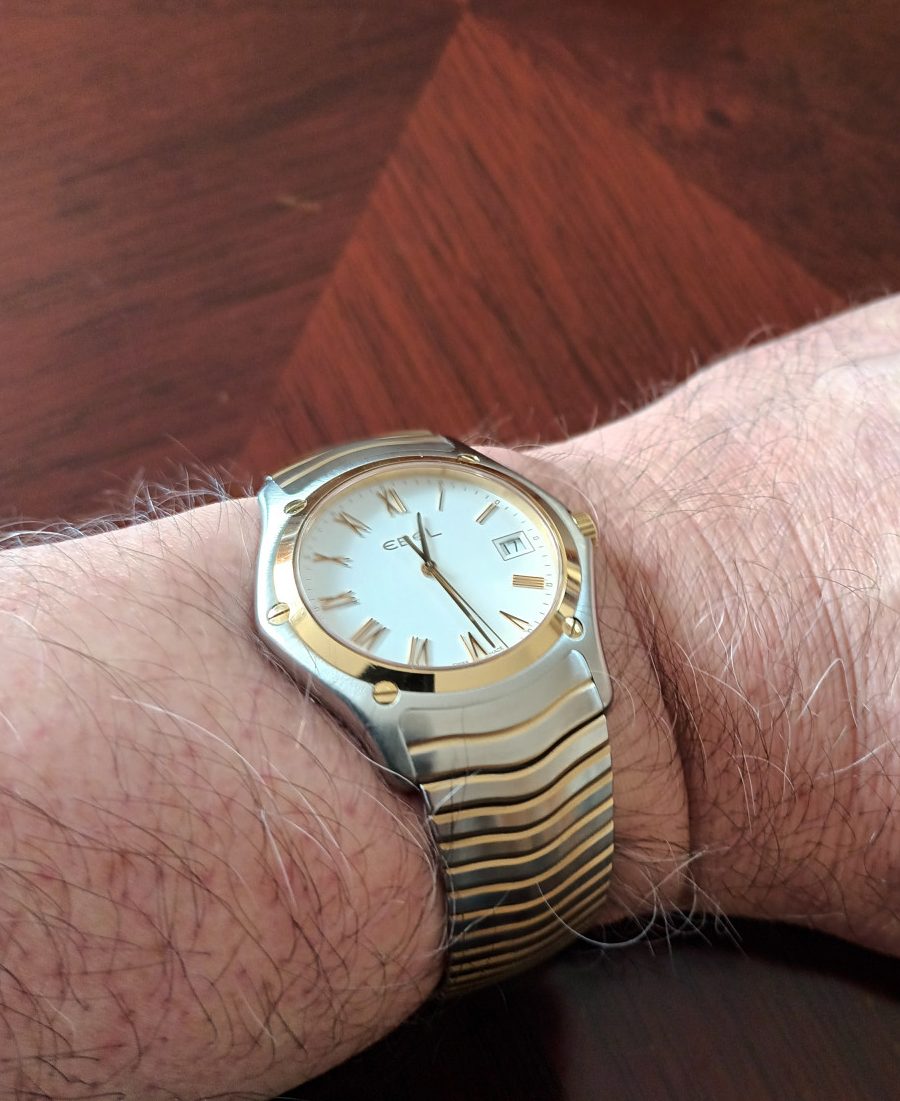
The inevitable of course happened, with the company being moved on again in 2004 to US-based Movado. Initially, this marriage was not very auspicious as Movodo also tended to major on designer brands such as Lacoste, Hugo Boss etc. However, things did get going again and resources were made available in order to launch several new models, and revamp existing ones – many now sporting vibrantly coloured straps. On the chronograph side, the 1911 became the 1911 BTR (Back to Roots) and this was a very large watch at 44.5 mm and, frankly, with its oversized metal/rubber pushers looked just a bit too clunky. Incidentally, the price for a stainless steel model in 2005 was in excess of $5,000 – again, a large sum for the day. There were some interesting versions made (see later on) and initially prospects looked quite positive with deals struck in 2007 with Arsenal and Bayern Munich football teams. Alas, the hoped for returns never really materialised, and from about 2010 onwards things dwindled rather. As I write today, there was a 2021 re-launch by the President Flavio Pellegrini – including some new, but somewhat minor sports sponsorships. The current range is fairly modest, and mainly offered at “affordable” prices (with a few exceptions) from £500 to say £2800 via mainstream jewellers. There are few precious metal pieces now, and most are quartz powered – including the chronograph (ref E1251F41). So, although of reasonable quality, Ebel is some way from its former self, but, with investment and decent advertising, whose knows what is possible!
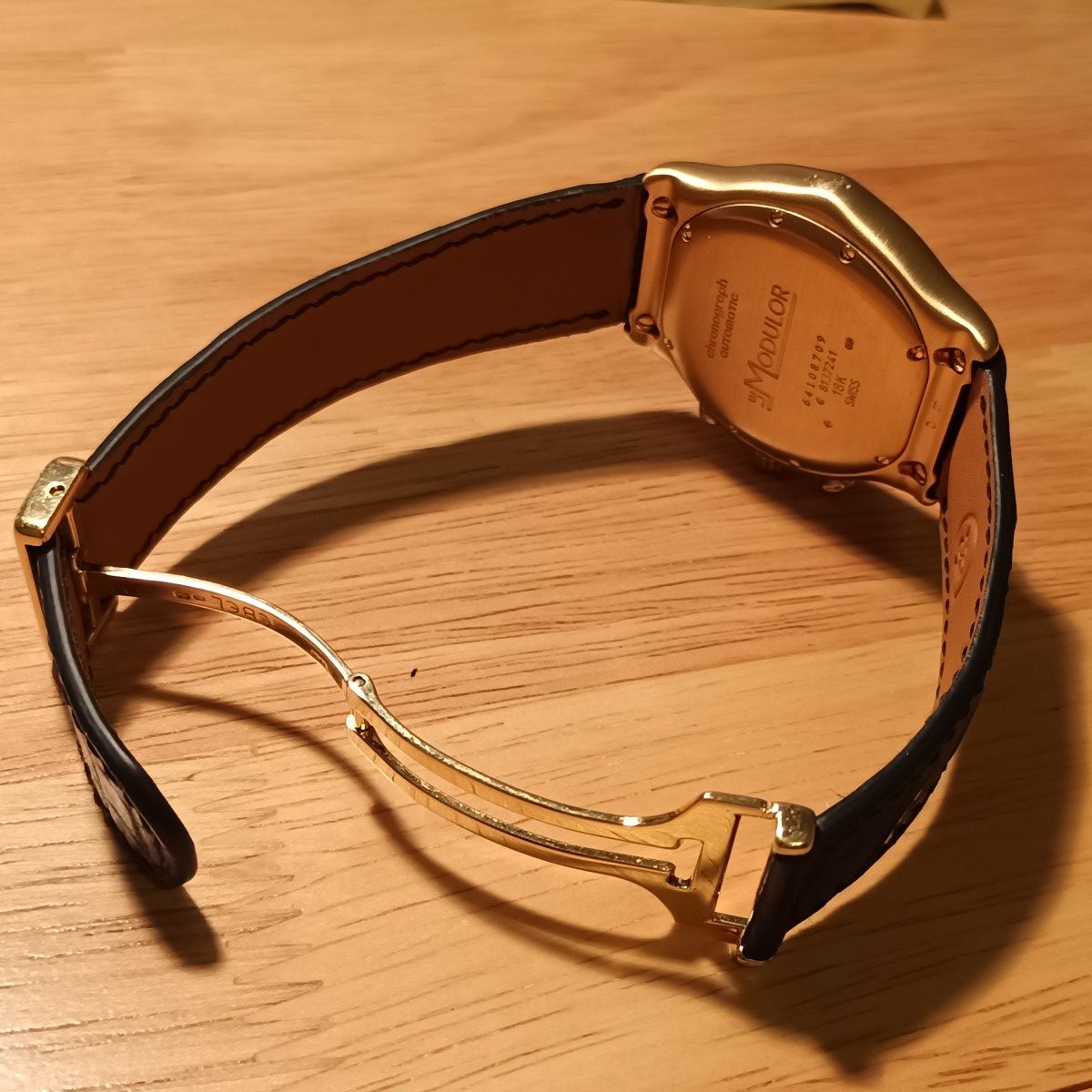
Before proceeding to my own watch, I just wish to cover in a little more detail aspects of the chronograph range – along with some interesting variations.
Focusing mainly on the pre-BTR chronographs, as mentioned before, the original “Don Johnson” version (ref 8134901) is a masterclass in classy aesthetics and technical prowess. Period. To my mind, that has to be the Ebel pinnacle then and now. To be frank, white or black dials are both super and the El Primero movement is of course another historically interesting draw. A little while later – in 1986, for reasons that are somewhat unclear, the gold “Wave” bracelet was changed to straight links. Still attractive, but not quite as classy or unusual. (There has been an suggestion [alleged] that there were some quality issues early on, with bracelet failures. Ed).
As already mentioned, from around 1995 Ebel used their own 137 caliber (the modified Lemania 1340) so the vph reduced to 28,800 and jewels were down to 27. Models were again in a variety of materials, so; stainless steel, bi-metal and in gold.
During the later 1990’s, Ebel were probably at their pinnacle in terms of output, recognition and high quality technical pieces in precious metal. No other model exemplifies this more than the 1911 Perpetual Calendar Chronograph in gold (ref 8136901). This was some £40,000 apparently!! The dial is not really highly decorated, but is a feast of information. The register at 12 shows months and inboard a leap-year quadrant noting Bissextile (twice/sixth meaning a day added every fourth year). The one at 3 notes the date and a minute recorder via two hands. The register at 6 shows a moon-phase plus the hour recorder, and lastly, at 9, there is the day indication and running seconds – again, via two hands. I assume that caliber 288 was employed here. These pieces are quite rare, with the non-bracelet versions (ref 8136901) selling for some £12-14k, and full gold some £17k. From a personal point of view I am not as interested in these models – despite their incredible technicality. Having had a Patek perpetual calendar, I just found it a pain to keep all those complications in synch, plus the dials can be a little too busy.
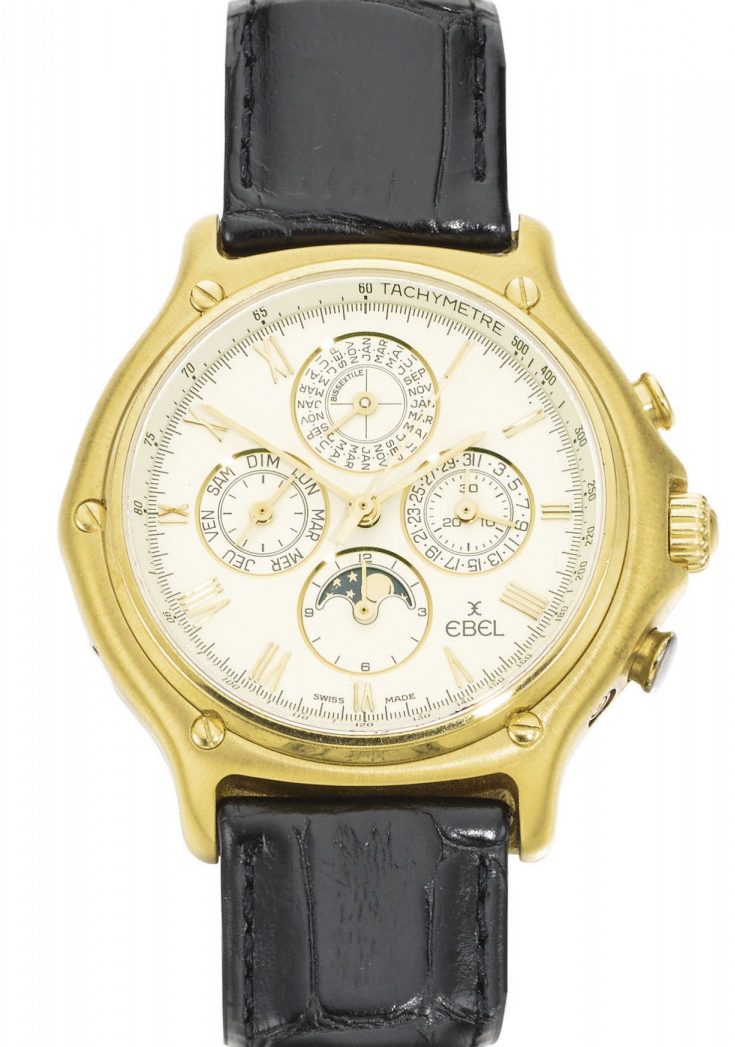
Another interesting novelty was reference E9137247 (below) – from around 2005. This curiosity is in stainless steel, but then jewelled-up with 34 brilliant diamonds (some 2cts worth) set in the bezel. It was surely intended for the ladies market, but it had a more man-sized 40 mm case. Uniquely, the watch only has three Arabic numbers on the dial and the registers are uniquely ovoid in shape. Usually it came with a black strap – rather than the green version here. I am sure I read somewhere that it was some £18k new. The piece shown below was sold in 2009 at an Antiqourum sale in Hong Kong (with no reserve) for HK$ 28,800 – so a measly £2.7k (the estimate had been some £3.8k – £5.2k). I have seen one for sale in the UK very recently – it seems to have now gone at sub-£4k which still seems a bit of a steal really!
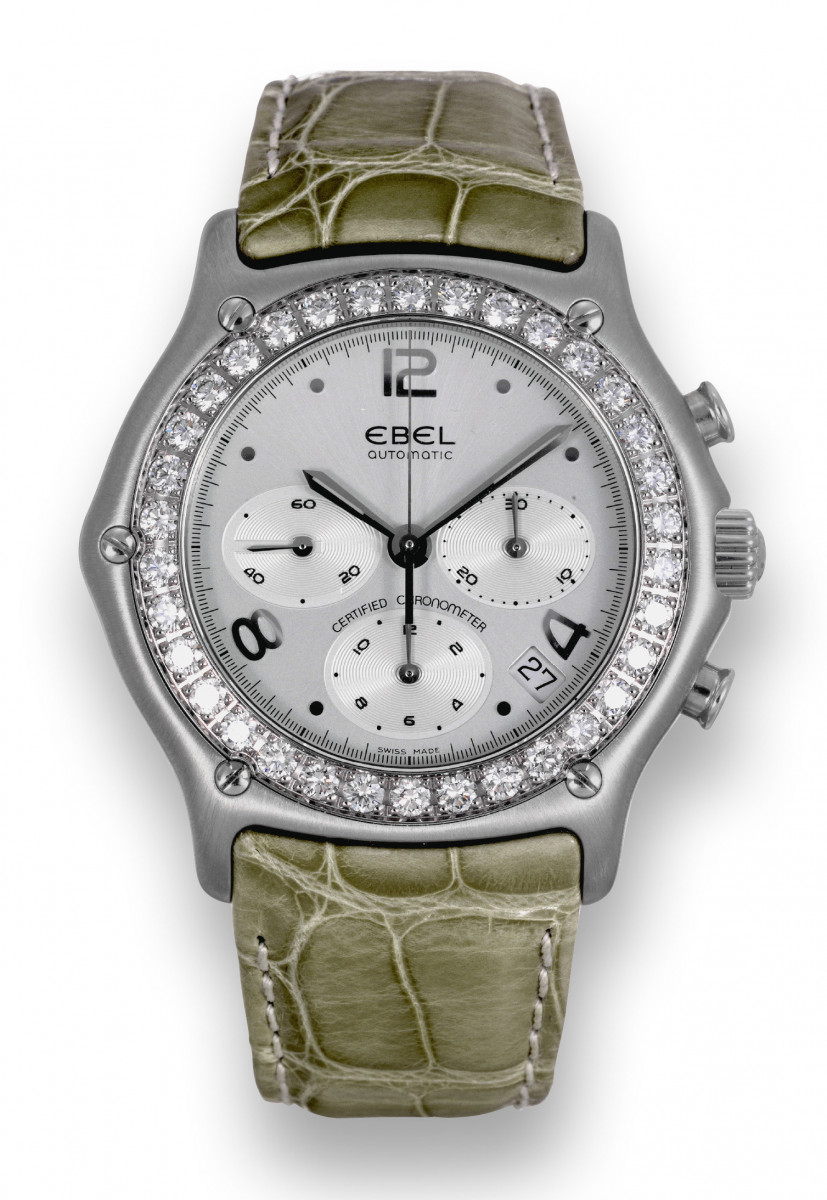
Finally, on versions, this below-shown interesting iteration from around 2008 is a the gold limited edition (100) 1911 BTR Skelette (Skeleton) – reference E5139L72. It had a partial skeleton dial display, using counting numerals rather than sub-dials with hands. Another caliber was needed here, so 139. This is quite a rarity and Dreamwatch in Germany currently have it up for Eu 12,000. There are other unusual versions that pop up – such as a gold 1911 Sport Classic chronograph with a darkish mother of pearl dial! This is currently for sale in Germany at some £4.5k odd. Interesting!
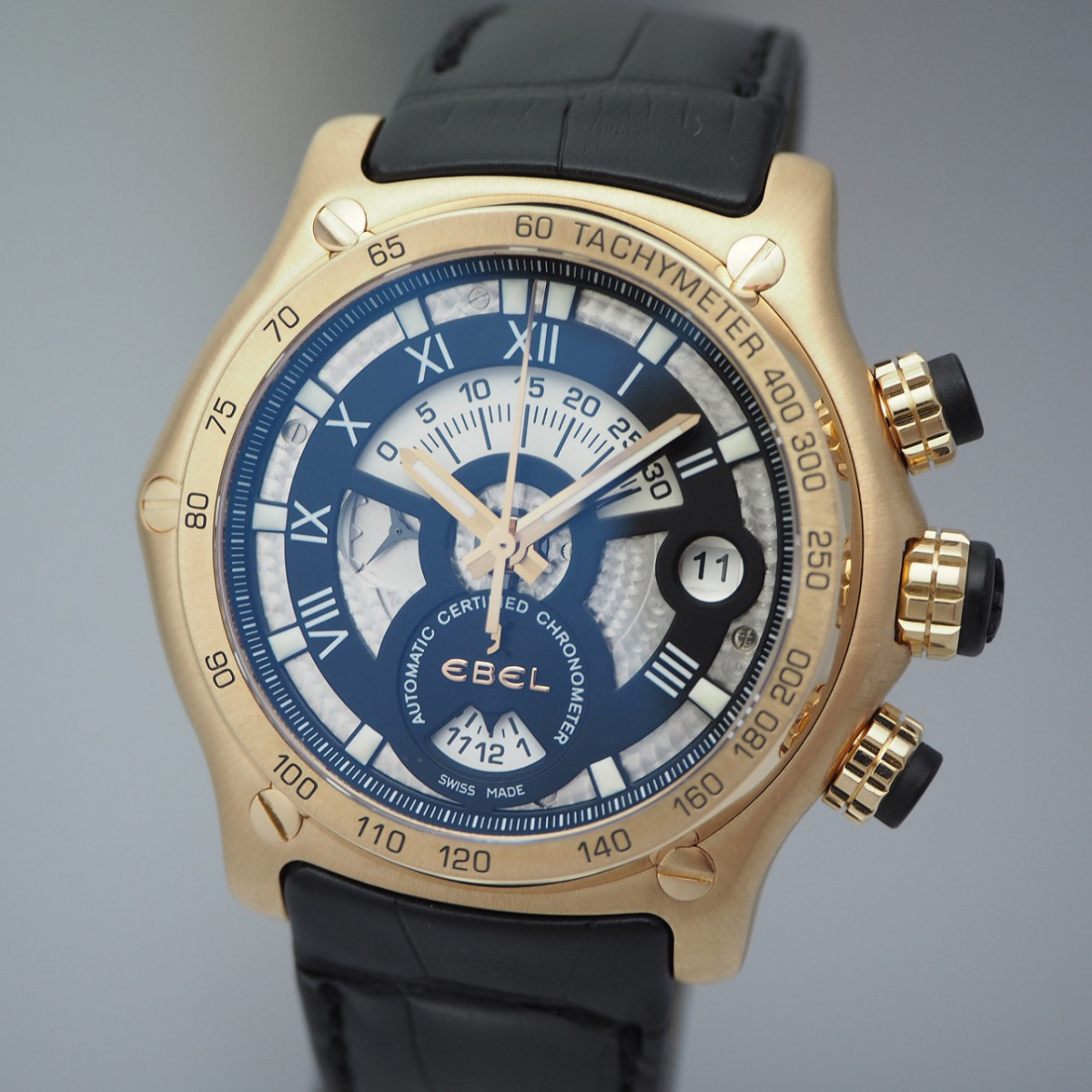
Turning to my watch specifically, I must confess to being really very impressed and it is easy to just gawp at it! I think the size is just right at 41 mm. The case design is very distinctive, and although other brands show exposed screws (e.g. AP Royal Oak and Hublot), they frankly can just look a little too industrial, but Ebel’s don’t – possibly as they are quite delicate. Also, the combination of the matt finished case with polished bezel, screws, pushers and semi-recessed crown, all offer good contrast. The integrated lugs are neatly flowing and are quite modest. All this nicely frames the dial and contents.
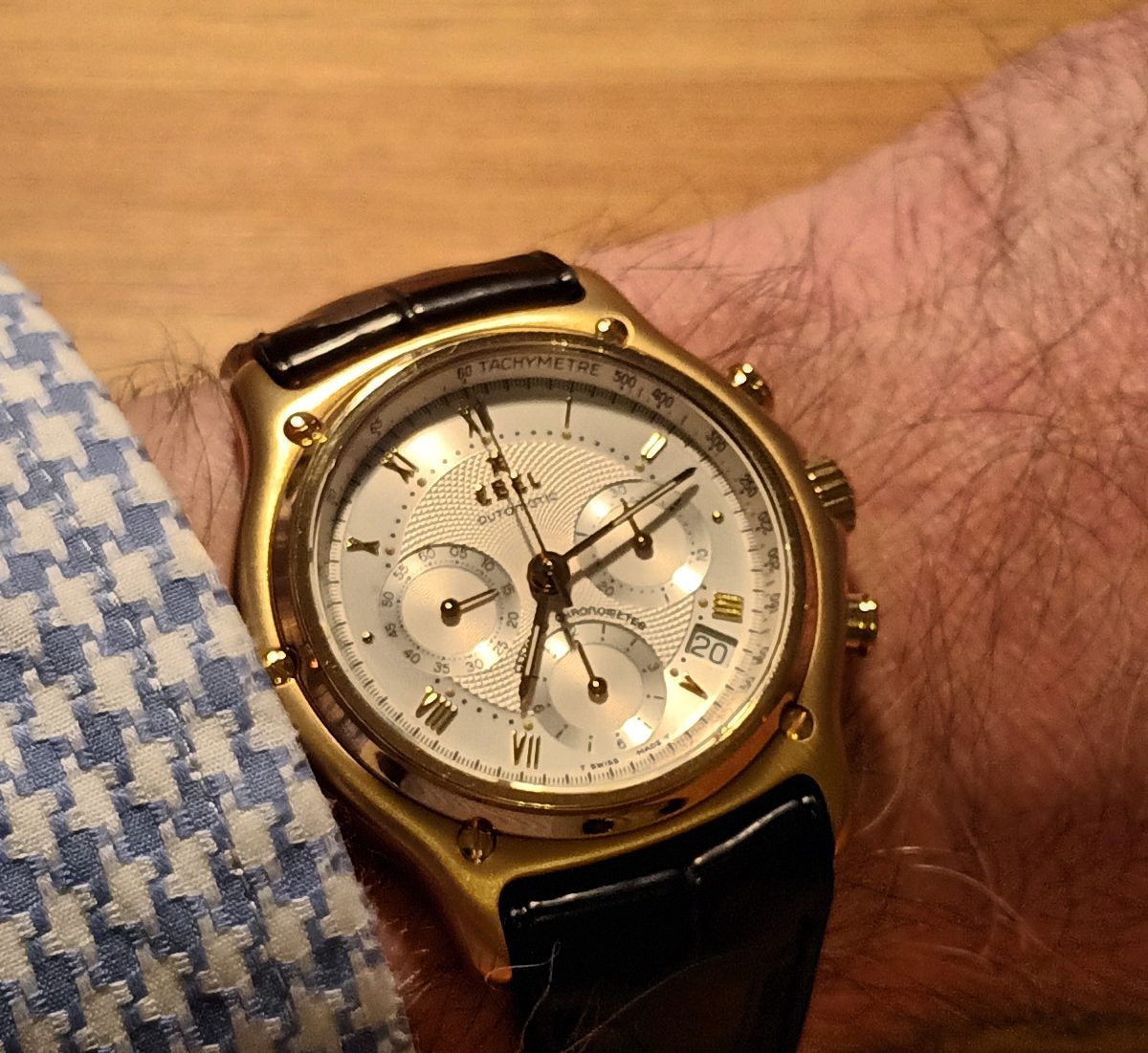
Now to that lovely silver dial! When one peers through a loupe there is so much going on, but from further away all is pretty clear. Firstly, there are several guilloche patterns. The main one – I think is a Clous de Paris type, radiating out – stretching and expanding as it goes. Outboard of this there is a satin-like surface. The registers have two different strength circular patterns – inboard and outboard. The outer tachymeter rehaut has an almost smooth white finish. Hovering above, the main hands are sword-shaped in gold with rectangular lume inserts. The sweep hand is a gold needle. Roman numerals, and dots at 3 and 9, are applied gold, as is the “Ebel” and motif. Other dots have lume. Lastly on the dial, a date window in an interestingly El Primeroesque 4.30 position. All this is covered by a non-reflective sapphire crystal.
There is a solid case back noting the various serial/ref numbers, gold marks and “El Modulor” name. I am unsure quite why the latter needed to be emphasised quite as much, as it was really a retrograde step (from the El Primero), but there you are! Regarding waterproofing, I understand this to be 30m.
I shall not cover the movement as this has been detailed (and shown) earlier in sufficient detail. Suffice to say that is of very good quality and technical standing – if not quite up to an El Primero level.
Turning now to the strap! Well, I managed to get a bespoke black crocodile one made – by David Richards at his London-based The Strap Tailor business. The old strap was sent to him and was pillaged for the inbuilt threaded screw tubes, and these were then re-installed into the new strap. I have to say that the finished article is of very high quality and looks authentic. Another useful aspect of the strap is the way it adjusts. So, as there are no strap holes, alteration is done by threading it through a sort of miniature belt buckle (to suit one’s desired length), then the whole thing then levers and locks shut. It is so good that one can make such precise micro adjustments – I only wish more straps were made in this way – or have closer holes!
So, conclusions on my purchase? As to the running aspect, OK, it does not have the great integrated El Primero engine that I may first have preferred! However, the movement uses a pretty renowned base unit that has been heavily modified/improved, so, is hardly just off-the-shelf, and in fact technically, is an in-house caliber! To date, the watch has offered supreme accuracy. As to the aesthetics, well, I just think it is one of the best looking dress type chronographs ever made. All the displays are quite logical and clear, and the physical operation of the piece is just fine.
Lastly, I feel that all these chronographs are very underrated. The EP versions (1911s and before) have a following, but the later 1911 137s should not be ignored as that movement is still high quality and in fact chronometer rated. The stainless steel ones are a snip really and certainly the bi-metal ones are attractive and not a lot more. Gold versions look great, and with a super matching bracelet too, are just drool-worthy. They truly are Architects of Time, and maybe will become the next Nautilus or Daytona as well!! The BTRs? Well, they are still very good watches, but for me are simply too large.
Well, that is the end and I hope you have not nodded off! I am in touch with Ebel in the hope that I can get a bit more information and clarify a few things, so, will update as and when.
Rating: 4.75/5
P.S. The Writer has just obtained an earlier (c1992) gold El Primero 1911 Sports Classic version on a pin buckle strap – as below! The watch of course is a little smaller and the dial less fancy, but it is lovely. The watch ideally needs a polish and a new strap (sigh) at some point, but is fine for the moment. The 134 caliber image shown earlier is from this watch.
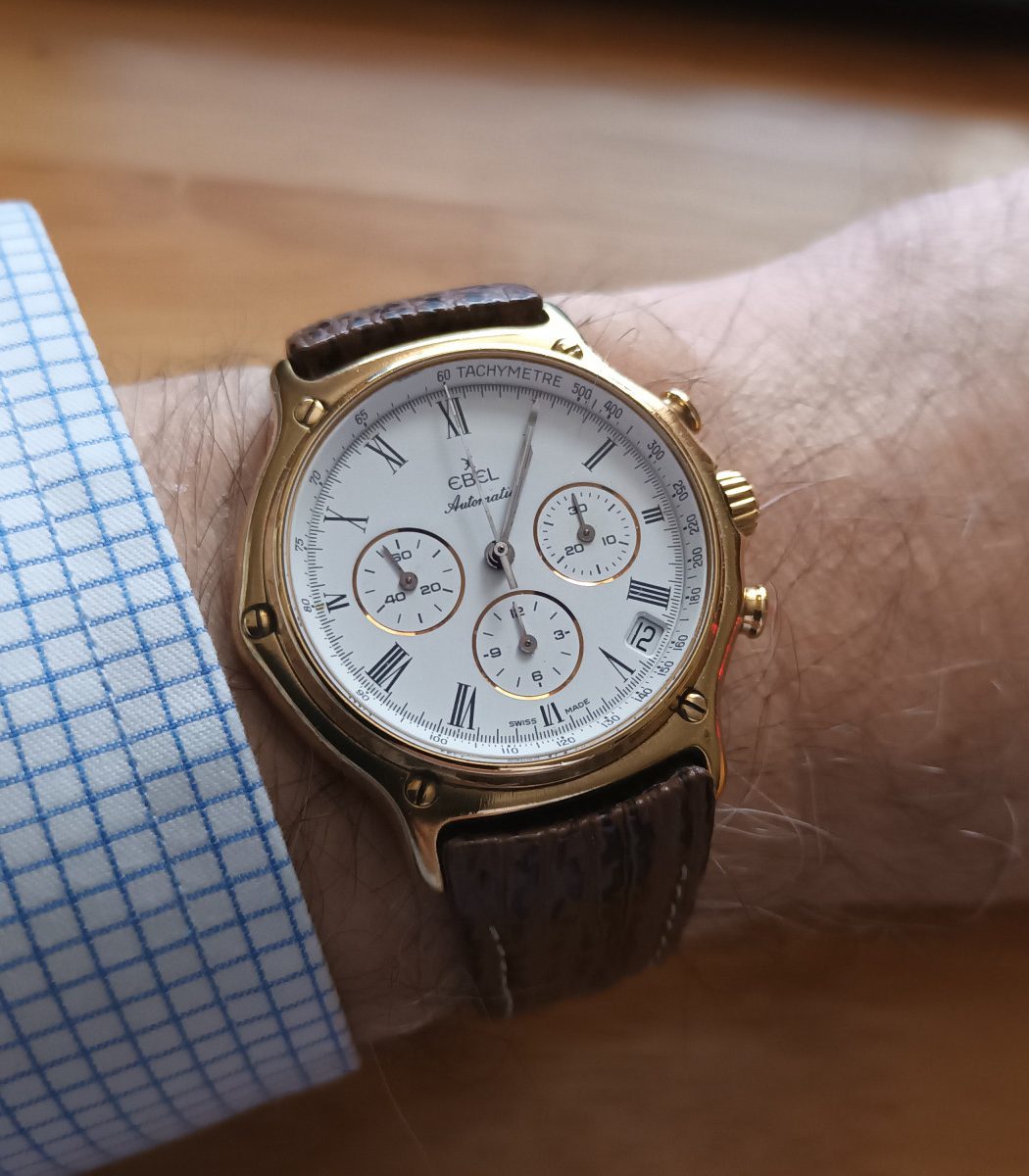
Words/Images: The Writer – unless noted otherwise.

